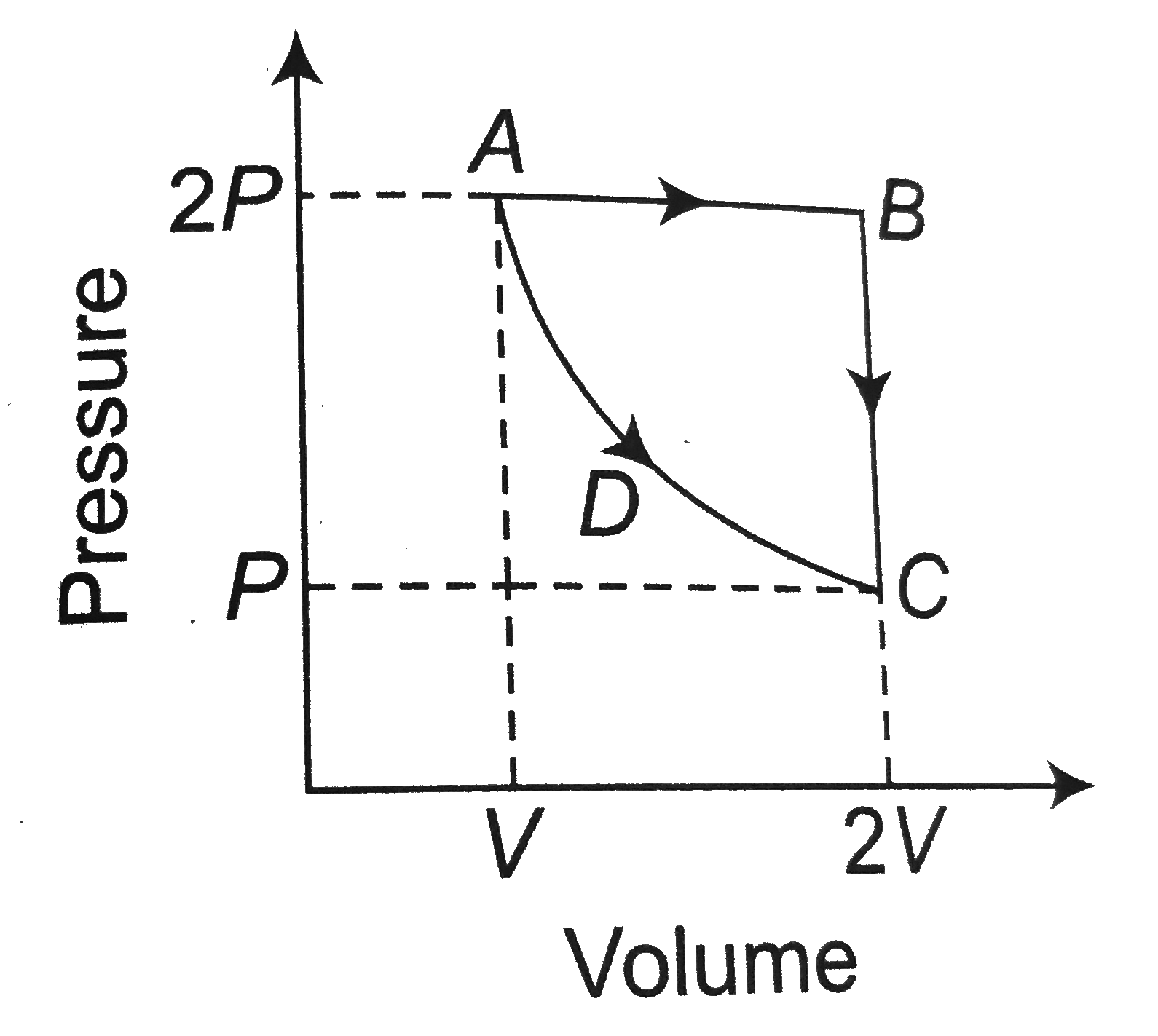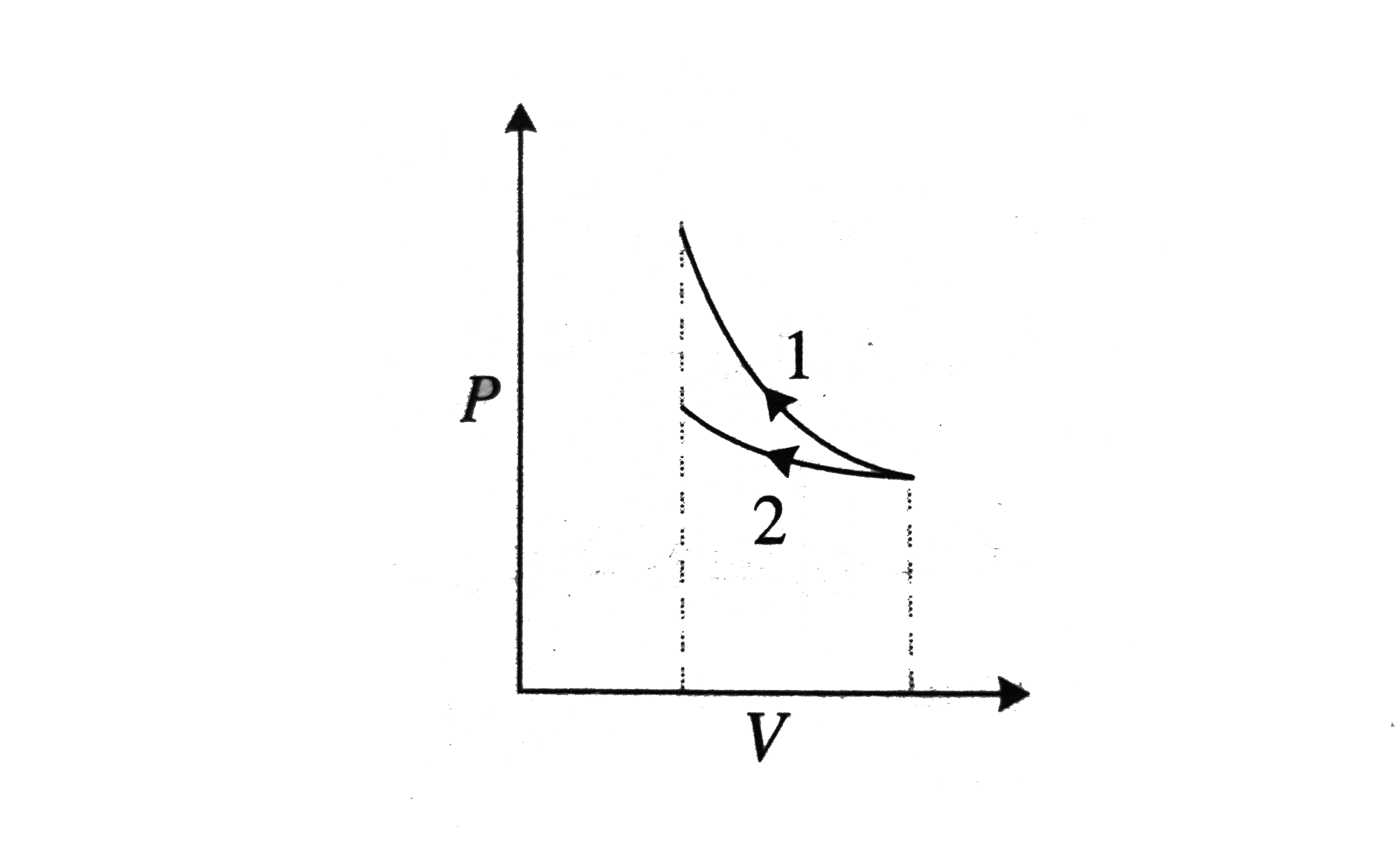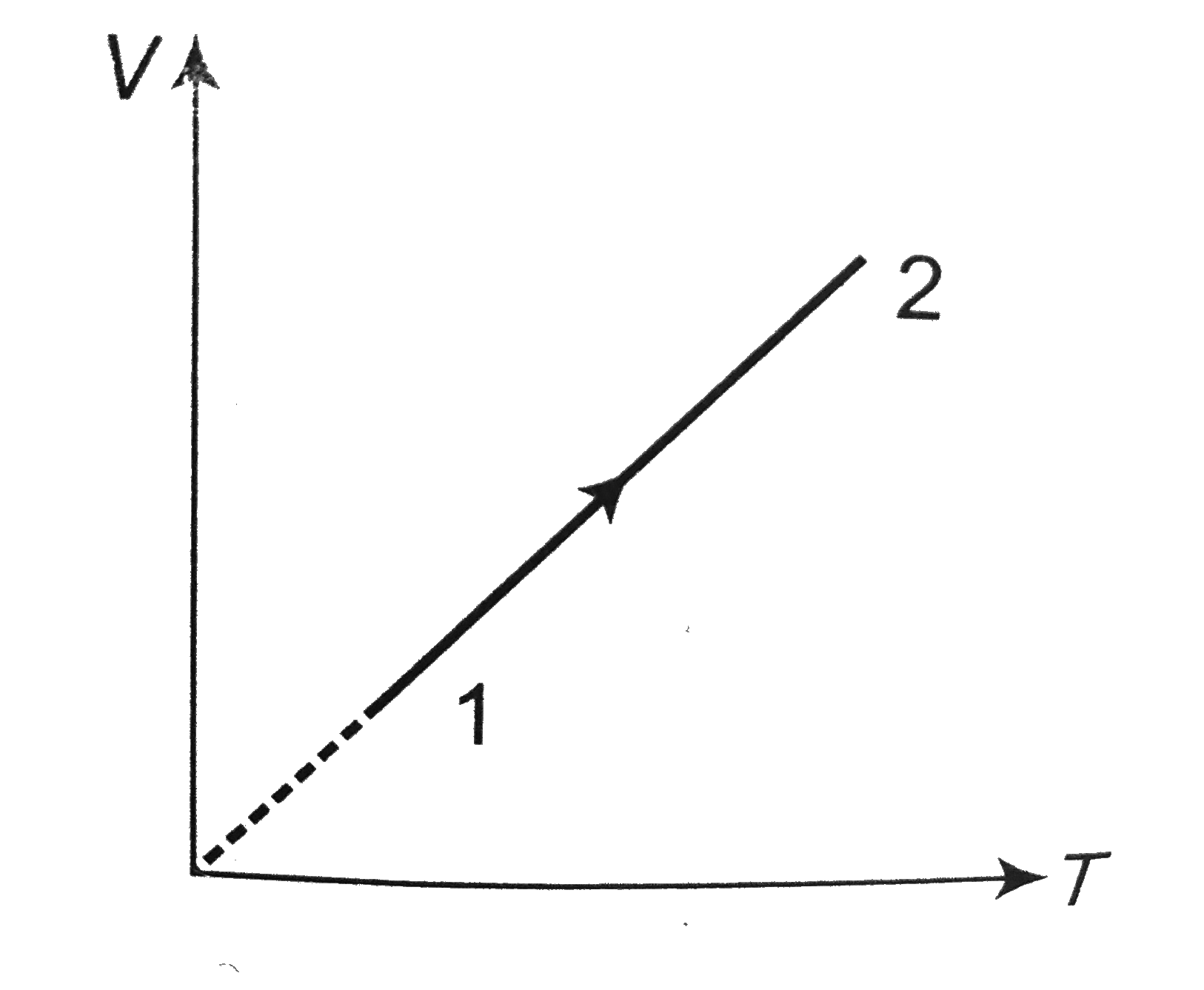A fixed mass of a gas is first heated isobarically to double the volume and then cooled isochorically to decrease the temperature back to the initial value. By what factor would the work done by the decreased, had the process been isothermal?
2
1/2
∈2
∈3
The correct Answer is:C
ΔWABC=2P(2V−V)=2PV
ΔWADC=nRT1n(2V/V)
=2PV1n2

∴ The required factor will be
=2PV1n22PV=1n2.
Topper's Solved these Questions
- BOOK - A2ZCHAPTER - KINETIC THEORY OF GASES AND THERMODYNAMICSEXERCISE - Assertion Reasoning15videos
KINETIC THEORY OF GASES AND THERMODYNAMICS
- BOOK - A2ZCHAPTER - KINETIC THEORY OF GASES AND THERMODYNAMICSEXERCISE - NEET Questions55videos
KINETIC THEORY OF GASES AND THERMODYNAMICS
- BOOK - A2ZCHAPTER - KINETIC THEORY OF GASES AND THERMODYNAMICSEXERCISE - Second Law Of Thermodynamics29videos
KINETIC THEORY OF GASES AND THERMODYNAMICS
- BOOK - A2ZCHAPTER - GRAVITATIONEXERCISE - Chapter Test29videos
GRAVITATION
- BOOK - A2ZCHAPTER - MOCK TESTEXERCISE - Motion With Constant Acceleration15videos
MOCK TEST
Similar Questions
Two moles of an ideal gas are cooled isochorically and then expanded isobarically to lower the gas temperature back to the initial value. Find the entropy increment of the gas if in this process the gas pressure changed n=3.3 times.
View SolutionTwo moles of an ideal gas at temperature T0=300K was cooled isochorically so that the pressure was reduced to half. Then, in an isobaric process, the gas expanded till its temperature got back to the initial value. Find the total amount of heat absorbed by the gas in the processs
View Solution
Knowledge Check
- Question 1 - Select One
A fixed mass of a gas is first heated isobarically to double the volume and then cooled isochorically to decrease the temperature back to the initial value. By what factor would the work done by the decreased, had the process been isothermal?
A2B12Cln 2Dln 3 - Question 2 - Select One
A fixed mass of a gas is adiabatically made to expand to double its volume and then isochorically heated to bring the gas to the original pressure. The ratio of final to initial temperature will be
A1:1B2:1C1:2DDepends on the atomicity of the gas. - Question 3 - Select One
If one mole of gas doubles its volume at temperature T isothermally then work done by the gas is
A−RTloge4BRTloge2C−RTlog102DRT
Two moles of a certain ideal gas at temperature T0= 300 K were cooled isochorically so that the gas pressure reduced η= 2.0 times. Then, as a result of the isobaric process, the gas expanded till its temperature get back to the initial value. Find the total amount of heat absorbed by the gas in this process.
View SolutionA mole of an ideal gas initially at a temperature T1=290K expands isobarically until its volume increases 2 times. Next the gas is cooled isochorically to its initial temperature T1.Find (a) the incement ΔU in the internal energy of the gas, (b) the work A done by the gas (c) the amount of the heat Q received by the gas.
View SolutionTwo moles of a certain gas at a temperature T0=300K were cooled isochorically so that the pressure of the gas got reduced 2 times. Then as a result of isobaric process, the gas is allowed to expand till its temperature got back to the initial value. Find the total amount of heat absorbed by gas in this process.
View SolutionA certain mass of a gas is compressed first adiabatically, and then isothermally. In both cases, the initial state of the gas is the same. Is the work done W1 in the first case greater than the work done W2 in the second case ? Explain.
 View Solution
View SolutionVolume versus temperature graph of two moles of helium gas is as shown in figure. The ratio of heat absorbed and the work done by the gas in process 1−2 is
 View Solution
View Solution

